(Last update: February 19th, 2017. Latest additions to the observations are at the end.)
I have been using Panasonic LX series cameras since September 10th, 2008, when I bought the LX3. And I upgraded to the LX5 in August, 2011, when the LX3 broke in a thunderstorm. In August 2014 I gave the LX5 to my daughter, and I didn't have a real camera for two and a half months, until I got the Panasonic Lumix DMC-LX100 on October 31st, 2014.
Mobile phones are eating away the market of the low-end-compact, and this is why the LX100 is significant: it delivers high quality, excellent control, and the feel of a real camera in a small package. Low-end it is not.
The camera fits into coat pockets, but there is enough size and weight difference to feel in the handling, compared to the LX3 and the LX5. My initial feeling is that I like the size and weight, but I may have to shop for coats with somewhat bigger pockets in the future.
There is a Leica version of the same camera (Typ 109), which is here in Finland priced about the same (1000 euros) as the LX100. But the Leica doesn't have the grip or the thumb rest of the LX100, and I think these are absolutely necessary. In fact, the LX100 feels much better in the hand than the LX3 or LX5, thanks to the well-designed grip and the controls which are mostly in just the right places.
It will take some time to really get used to the LX100, and to fine tune the settings, but it is already evident that there is a lot of scope for a photographer to develop with this camera.
With the LX3 and LX5 I was pushing the envelope, trying to get photographs which I knew would probably fail, but the LX100 handles many such situations without problems: fast and reliable focusing, using ISO 3200 in the dark, control of depth-of-field, etc. I need to learn new things to really make use of the LX100.
By the way, the shooting experience piece at Dpreview is to be recommended, it gives quite a nice description of how the LX100 feels in use. Richard Butler also refers to the LX3, which was the camera that really got me started with digital photography.
My first digital camera was the Canon Digital Ixus 400, which was good enough but not really inspiring. And my first camera was the Olympus XG-1 SLR, which was good, but that was a long time ago in the age of the 35 mm film. With the LX3 and the LX5 I took altogether over 389000 photographs, and with the Ixus 400 some more, so that I have crossed the threshold of 400000 photographs taken with a digital camera.
The camera was packaged in slightly larger box than the LX3 and LX5 were, a package of similar design. On top there was a thick pile of user guides in various languages, a cd (which I didn't look into), and below this layer was the camera, cables, battery, charger, flash unit, etc.
It took a little effort to find the string which fastens the lens cap to the camera, and some time to charge the battery, and install a SDHC card, but then I was ready to go.
When I switched on the LX100 for the first time, the click was satisfying, and I didn't need to look into the manual at all. Not that I would have done it anyway, "try it out" is my motto.
The lens extends out really far - and the lens cap is fixed to the part that extends, so having the lens cap on doesn't prevent the camera from turning on. The string is conveniently just long enough for this.
Speaking of the on-off switch, the camera is really easy to turn on, but switching it off takes some practice, and may not be so easy with gloves on. That remains to be seen. But all the controls felt well made, robust, and probably they will be quite durable in use.
The controls feel natural, at least if one has used a SLR or a DSLR, but they are different from the LX3 and LX5 so that it will take some time to get familiar. For zooming I have mostly used the zoom switch, not the ring around the lens, but this may change in time.
It is somewhat easy to press the iA button on top of the camera by mistake, but there is an option in the settings so that you need to continue to push the button to engage the iA mode. I selected this option. It would be nice to set another function to this button, as well as to the filters button, but I guess three programmable fn buttons are enough.
The LCD is good and provides a nice amount of information, and the colors seem to match what you see on the computer, at least when you decrease the display saturation a bit. But I haven't used the LCD in summer daylight yet, this remains to be seen when the sun once again is high on the sky.
When I first tried out the EVF, it seemed to be somewhat difficult to use. But now I'm growing into it. In fact, it may be that I will take most of the photographs using the EVF, it is that good. Have to see how it works in daylight situations.
I tried to use the wifi for transferring the photographs to the iMac, but this didn't work at once; even the user guide didn't help. I tried giving the wifi password to the LX100, but it didn't manage to connect. In the end I transferred the photographs by using a SDHC card reader.
Later on I managed to set up a wifi connection using the instructions given by Arago at Dpreview forums. However, it seems that you have to select each photograph you want to transfer, there is no "copy all" function, and thus when you have tens or hundreds of photographs the wifi connection is not usable for transfer.
I did a little bit of tweaking of the settings to make the camera the way I want, and here I must say that a touch screen would be great to have, using the buttons felt a bit counter-intuitive in some places. But I soon got used to the way one should navigate through the menus.
For the photographs I have been mostly using the normal standard film mode, dropping saturation down by -1 and sharpness by -1. At ISO 3200 I set NR to -1 as well. There are all kinds of filters one could use (including dynamic b&w which was rather nice on the LX3), but I haven't looked into this yet, and it may be that they don't offer anything usable for me.
When it is dark I'm using higher ISO settings, up to ISO 3200, which doesn't seem to make too much of a difference in terms of noise, at least compared to the LX5 at ISO 400.
The camera is indeed silent when you put it into the silent mode, which I like a lot. The only noise you hear is very low, due to focusing. I think I'll continue using this setting.
Speaking of focusing, this camera is really fast. In fact, focusing happens almost without lag. The difference compared to the LX5 is rather dramatic.
Well, I must admit that when I went outside and it was really dark, focusing close proved to be difficult, and handheld macro shots didn't work, but that wasn't a surprise. If there was a little bit of light in the frame, focusing was immediate for subjects a little bit farther away.
I have explored a bit how the focus point setting and focusing in general works, as there are a lot of alternatives. Usually I use the full 49 points for focusing, or then the single point in the middle, when taking macro photographs. So far I haven't tried out manual focusing as there hasn't been need for this. Going hyperfocal might be one reason to use manual focusing.
I have started going systematically through the settings of the camera, and there are plenty of things to be explored. As an example, it may be that I need to fine-tune the film mode to get the look I want to have, even though the results are promising.
Custom settings are available, and I started using them. I set custom settings as the function of the fn2 button to make it easy to change between the settings C1, C2, C3 and none. Currently I have ISO 1600 standard color settings in C1, ISO 1600 b&w in C2, and ISO 200 standard color settings in C3. Also, the fourth setting is not using custom settings, and the camera remembers the way it is set up.
The logic of the camera is different from the LX3 and LX5 because of the dedicated controls for aperture, shutter speed and exposure compensation, but I think I'll soon adapt. I will be using aperture priority mostly, but I need to remember to change exposure compensation when needed.
I have put up the live histogram and guidelines on the display, and this seems to work well. There is also an electronic level, which I set up in fn1, but it may be that I won't be using this much.
It will take some time to get used to the camera, and to the look of the photographs. But my first experiences of taking photographs in the dark suggest that using IS0 3200 is not a problem. Or in fact, ISO 3200 is the solution, meaning that I will be able to take handheld photographs at 75 mm equiv. even when it is dark outside.
The LX100 is at least three stops better that the LX5 is when shooting in the dark. This is promising given the long dark winter months we have now ahead here in Finland. The image stabilization seems to work well, so it may be that ISO 3200 is even a bit too high.
Also, it seems that there is more room for tweaking the ISO 3200 jpeg files than there ever was at ISO 400 with the LX5. Not that I'm interesting in doing a lot of post-processing, but sometimes it helps to lighten up the shadows a bit.
I ordered a second battery, one made by Duracell, which should be compatible, at least I hope so; the price difference was remarkable compared to Panasonic originals.
Also, I ordered a class 10 SDHC card to be able to import the photographs faster into the computer. My old class 4 card is too slow given the number of photographs I'll probably take with the LX100. I took 389 000 photographs with the LX3 and the LX5, and I hope the LX100 will be as durable.
---
I'm adding new observations about the LX100 to the end of this posting, after this note, and won't be modifying the part above, except correcting errors if there are such.
---
The battery lasted for over 600 photographs with the first charge. Not bad, considering that I did a lot of going through the menus, setting up the camera, etc. In normal use the amount is probably much more. With the LX5 I got up to 1400 photographs with one charge of the battery.
---
When taking longer walks I used to carry the LX5 in my left hand hanging from a small mini-tripod. It was rather instinctive to raise the camera, switch it on and to take a photograph. In fact, I needed to take off the lens cover but right now I have no idea at what point this happened, it was ingrained in muscle memory. The LX100 has such a good grip and a thumb rest that I'll probably carry it in my right hand, ready for shooting.
---
I used hyperfocal setting (from nearby to infinity) with the LX3 at night, because the focusing was too unreliable when it was dark. With the LX5 there was no need for that any more. And the LX100 is much better that the LX5 in focusing, even in challenging situations and at night. So I won't probably have any need for manual focusing. Well, perhaps if I'll be shooting the night sky using a tripod, or fireworks, then manual focusing will be needed.
I had a look at how the display looks like in manual focus mode. There is a horizontal line from "mountains" (infinity) to "flowers" (closeups), and a pointer that moves on this line. But there is no DOF display included. However, the left end of the line (near infinity) is colored in red and the right part of the line is white. Maybe the red means that here you gain DOF all the way to infinity?
Later I had another look at the display when using manual focus. I realized that the red part of the line should change in length with aperture if it refers to hyperfocal. The length didn't change with aperture, though, so I don't know what the colors mean, probably not DOF.
Regarding DOF, we are speaking here of two different things, DOF preview, and preselecting the wanted DOF using a visual display such a line between infinity and closest focusing distance. This line display is in function similar to using the manual focus lenses on old SLRs where the DOF was printed out for various apertures on the manual focus ring, and you easily could determine the right hyperfocal setting for different apertures.
Regarding DOF preview, when you press the shutter-release button halfway in manual focus mode, the LX100 goes to the selected aperture and the result is seen on the display. This is the easiest way to get DOF preview.
Also, when you are using manual focus and rotate the ring around the lens, there is a magnified view in the center of the display to help in focusing, rather similar how it worked in old manual focus SLRs such as the Minolta XG-1 which I still have.
The Minolta XG-1, my first camera, was in retrospect a great camera to learn about photography: manual focus and aperture priority was the way to go. I took the XG-1 out from the storage shelf, dusty but still intact, and below you see how you can determine DOF for different apertures when using such a camera.
---
As discussed in the comments, when the LX100 is switched on and the OIS system is working, there is a low hum, at the threshold of hearing. I hadn't realized that the hum was there. I guess I was focused on seeing, not hearing.
You can hear the hum when it is otherwise silent and you lift the camera to near your ear. Rather pleasing sound, it you ask me. It almost feels as if the camera was alive, some tiny creature breathing inside.
This reminded me of Terry Pratchett's Discworld novels and the iconograph: "Unlike a normal camera, the iconograph contains a tiny imp who quickly paints the pictures (also called iconographs) of the subject at hand."
Further, I remembered the day when I got the LX3. Taking the camera out of the package for the first time I noticed that the lens rattled inside the camera. I was worried that it may be broken, until I understood that this is the way it has to be for the lens to work.
Later I paid no attention to this. And the camera worked for over 200,000 photographs. Finally the camera broke in a thunderstorm, and the lens refused to extend properly. Even then my LX3 was of use: Francisco used it to resurrect his broken LX3.
---
I have found that I like using the EVF for composing a photograph. The exposure compensation dial is easily turned with the thumb while looking through the EVF, and you see the result in the live histogram display. This is great in situations where there are big differences in dark and light parts of the image.
With the LX5 I had set up different EV values in the custom settings, one for snow and one for not-snow, but with the LX100 I don't need that. In fact, it seems that there is much more scope of catching the light and the dark with the LX100, and I don't need to be as careful as with the LX3/LX5. I need some more practise with this.
---
I tried using the LX100 with gloves on, and the usability of the LX100 proved to be good, even excellent. The on-off switch is easily operated with the gloves on, with a little bit of practise. The exposure compensation dial turns easily when using a glove, and even the quick menu can be used with the gloves. Much better than with the LX3 and the LX5.
---
You find the Owner’s Manual for advanced features of the LX100 here.
---
(Addendum on October 24, 2015.)
Within one year I have taken over 60,000 photographs with the Panasonic LX100. That is quite little compared to the 400,000 photographs taken with the LX3/LX5, but it is still quite a lot for one year. I got my hands on the LX100 on October 31st, 2014, and it has been mostly good.
Well, there have been some disappointments as well. One of these is the macro mode, which quite often focuses on the background if the subject in front doesn't cover enough of the area. When taking pictures of plants etc., it is often required to first focus on something larger at the same distance, for example the hand, and then point the camera to the subject.
Another disappointment is the rear dial around the four-way controller in the back of the camera. It has stopped working properly; either it doesn't work at all, or then it works too eagerly. In a way this is not a new thing, as I had a similar problem with the LX5. The click wheel stopped working, probably due to dust.
With the LX100 the rear dial has become sometimes unresponsive, or then extremely sensitive to movement, so that it jumps to a random position when one touches it even a little bit. So, it is almost impossible to use it for changing settings, and one easily changes some settings when touching the dial by accident. For example, when using the P mode, one changes the combination of aperture and shutter speed via the rear dial, and these setting easily get changed by mistake.
Well, there is of course an easy cure: switching to aperture priority mode. In fact, aperture priority has been my choice since I bought my first camera, the Minolta XG-1, and I have been using it with the LX3 and LX5. However, during the spring of 2015 I switched to P mode when I noticed that it works quite well on the LX100, making more or less the same choices I would normally be making when using aperture priority. Now the dark season is once again upon us, so it may be easiest to set the aperture ring to f/1.7 and keep it there.
---
(Addendum on April 3, 2016.)
I'm having dust problems with the Panasonic LX100. The first dust spot appeared a couple of months ago, and I spent some time cleaning the lens and the UV filter until I realized that dust is inside the camera. The problem wasn't that big, as usually I was able to mask the dust spots away from photographs, and often they were not apparent at all.
However, later in spring 2016 the dust problem escalated, due to pollen and other dust that was floating in the air. When the lens extends, it acts in a way that sucks dust into the camera, and when it gets in there, at some point more dust appears in the photographs.
Below you see how the situation looks. The photograph was taken against a white wall, focusing to 3 meter distance, at f/16. When using a larger aperture or focusing closer the dust spots get more diffuse.
I have had some email correspondence with the shop that sold the camera. Their suggestion is to contact Panasonic Finland, even though the camera is no longer under warranty (I bought it September 2014). They said that their salespeople could perhaps do a bit of cleaning at the shop, but I doubt that, as the LX100 is far from easy to open for cleaning.
I'm not alone with the LX100 dust problem. There are several discussion threads on various sites about this, for example at Dpreview.
With the Panasonic LX3 and LX5 there we no dust problems but apparently there is something rotten with the LX100. Perhaps a problem with dust shielding, perhaps the design is flawed. I haven't yet got a response from Panasonic.
I like the lens (and the sensor) of the LX100, and the controls, and especially the aperture and exposure controls have proved useful.
However, the rear control dial is no longer working properly, or sometimes it seems to activate by itself and do random setting changes. And then there is the dust.
I have been thinking about getting the Panasonic GX80, which should be available in May or June, 2016. With the 12-35 mm kit zoom this should be a rather pocketable camera. And with the Panasonic f/1.7 42.5 mm lens I could do portraits and closeups (even in the dark). And then there is the bokeh.
The GX80 doesn't have a dedicated control for exposure compensation, but I could probably cope with this. Also missing is a switch to change the aspect ratio, which I'm using a lot on the LX100. But the GX80 has a touch display that tilts, which would be a big improvement compared to the LX100.
---
(Addendum on July 26, 2016.)
The Panasonic LX100 camera got broken while I was traveling, refusing to start. The lens was stuck, resulting in a system error when trying to switch the camera on, or off. I tried gently moving the lens backward and forward (there was some flexibility), but this didn't help. This isn't the fist time I have had similar problems, but earlier a restart of the camera has made the lens start working again.
Without the LX100, I tried taking photographs with my Nokia E7 phone, which is not something to recommend. I got so frustrated that I went ahead and ordered a new LX100 camera to replace the broken one. The price was 640 euro, 1/3 less than what I paid for the LX100 one year and ten months ago.
Why buy another LX100 when the old one had so many problems? The old LX100 has dust spots in the lens, the control wheel in the back doesn't work properly, the zoom switch on top of camera doesn't always work, and the lens gets stuck, disabling the camera.
I pondered possible alternatives to the LX100, and decided that there are none that would work for me better than the LX100. The LX100 has excellent controls (including the aspect ratio switch), bright 24-70 mm equiv. lens with reasonable macro capability, and big enough sensor (for bokeh...). The camera is small and light enough to carry in hand on long walks. The only problem is the durability of the camera after 100,000 photographs taken, and the dust issue.
Given the situation, I ordered a new LX100, and it should arrive within a few days.
When I got back home from traveling I tried once again to switch on the old and broken LX100. And lo! the camera started to work again, without any apparent reason, except perhaps the tremors, jitters and shakes when transporting the camera. In any case, soon I will have two LX100 cameras, one which has lots of problems due to lots of use, and one which is brand new.
---
(Addendum on August 8, 2016.)
One could say that the above photograph is an LX100 selfie, as it is a photograph of my old LX100, taken with a new LX100 camera.
The above LX100 observations were quite useful, but not all necessary tweaks were mentioned there. For example, I set the preview mode off, as well as the focus and shutter sounds. Also, the low-light focus assist lamp is off as the camera focuses quite nicely in the dark, and the lamp can be quite distracting.
In addition, I set the timeout for the sleep mode off, because the battery is quite durable (it is good for a two-hour walk) and there is no need for the camera to shut down automatically. And I have now two spare batteries (and two chargers), so I shouldn't run out of charge anyway.
Below you see photographs taken with the old and the new LX100. You probably can say which one is the old one that has the dust problem.
---
(Addendum on February 19, 2017.)
The LX100 dust problem appeared again, with the new LX100 which I bought in July 2016. The problem first appeared in the beginning of February, 2017, when I had taken 34,000 photographs with the camera. Below you see the dust particle in the right upper corner of the photograph (taken at f/16). With the old LX100 the problem appeared much later, when the camera was no longer under warranty.
It is apparent that the dust problem is quite widespread. There must be something fundamentally wrong about the design of the LX100. However, all other aspects of the LX100 are optimal for my purposes, so more's the pity. I'm planning to send the camera for repairs at some point, but I'm loath to be without a camera for any longer period.
It seems that changing the shooting style didn't help with the LX100. I thought that shutting down the camera and starting it up again would be the reason for getting dust inside the lens, and thus I have been keeping the new LX100 on all the time when using it. But I guess the dust still gets inside, via zooming, when dust particles get stuck to the lens barrel and bit by bit travel into the lens.
At some point I thought about getting the Panasonic GX80 with the Lumix G Vario 12-60mm f/3.5-5.6 lens, but it would be a bit limited choice. And much less bokeh in closeups... Another possible choice is the Panasonic LX15, which is however quite limited in the controls compared to the LX100. And apparently there is no 1:1 aspect ratio available. Another choice would be yet another LX100, which isn't that impossible to think as the price has gone down to 550 euro. But then there is the dust which would kill the LX100 at some point.
---





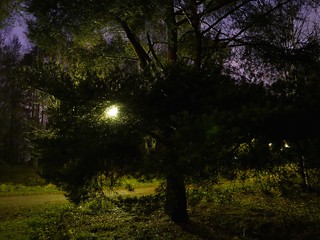




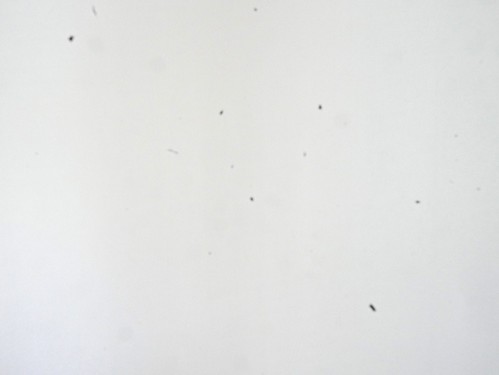
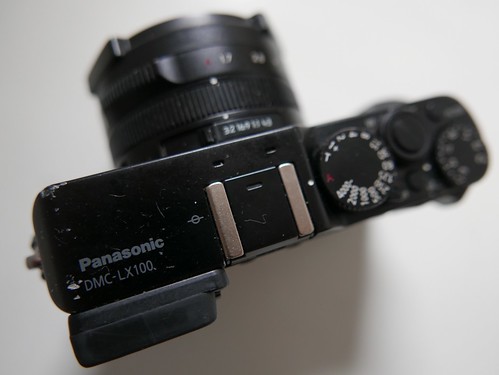
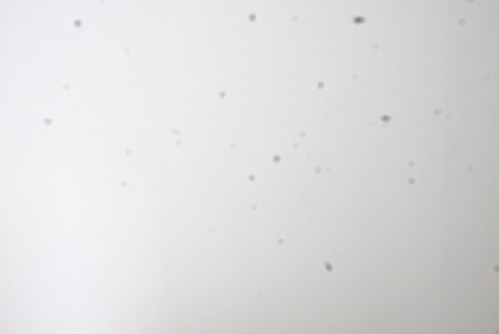

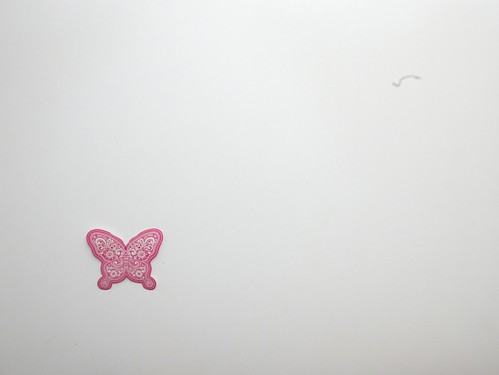



34 comments:
THe LX100 is indeed tempting. Thanks for your notes and I will keep an eye on your images too. The photos in low light do look impressive.
I waited for the successor to the LX5, and the LX100 certainly fits that description. Although it really is a different camera, with some common heritage.
It takes some time to adapt to the LX100, but it has been mostly a pleasure. I used the Nokia E7 mobile phone as my camera for over two months, and that experience is never to be repeated, I hope.
Thanks for the review. I'm a veteran of the LX line; I starte with the LX2, then upgraded to the LX3, then LX5 and LX7. So when I saw the LX-100 announced I almost jumped out of my chair.
I have a question: is there any sort of indicator of depth-of-field? (With the LX7 and the LX5 there is a horizontal indicator of D-o-F on the screen when you go into manual focus mode.) I use manual focus a lot for street photography, but I need to know that the D-o-F is in the right range (roughly 1 metre to almost-infinity). Can you see that on the LX-100? If so, how?
Thanks again!
You are meaning hyperfocal? I noticed that you (?) asked about this at Dpreview forums as well.
I used hyperfocal setting (from nearby to infinity) with the LX3 at night, because the focusing was too unreliable when it was dark. WIth the LX5 there was no need for that any more. And the LX100 is much better that the LX5 in focusing, even in challenging situations and at night.
So I won't probably have any need for manual focusing. Well, perhaps if I'll be shooting the night sky using a tripod, or fireworks, then manual focusing will be needed.
I had a look at how the display looks like in manual focus mode. There is a horizontal line from "mountains" (infinity) to "flowers" (closeups), and a pointer that moves on this line.
But there is no DOF display included. However, the left end of the line (near infinity) is colored in red and the right part of the line is white. Maybe the red means that here you gain DOF all the way to infinity? I'm not sure about this, though.
By the way, you find the Owner’s Manual for advanced features of the LX100 here:
http://panasonic.ca/viewing/ALL/DMC-LX100P/OI/sqw0021/sqw0021.pdf
Yes, hyperfocal. I've been asking all over, but no one seems to have an answer. But your reply comes close, so thank you for that.
(I will look at the manual.)
You are welcome, I hope you find the answer.
I had another look at the display when using manual focus. I realized that the red part of the line should change in length with aperture if it refers to hyperfocal.
The length didn't change with aperture, though, so I don't know what the colors mean, probably not DOF.
D-o-F is achieved using the Preview function (Fn1 is the default button). Pressing it once gives a Live DOF for the selected aperture, (though you should ignore Panasonic's counter-intuitive reference to 'Shutter' when you hit the button.)
Pressing it a second time shows the effect of the chosen shutter speed, though I do find that is rather a pointless function - everyone knows that if you use a slow speed, the picture will blur!
I read your review with great interest. One caution: be careful with off brand batteries. I've been using them with my Olympus EM-1 and they swelled slightly-- not so you could see but they got stuck in the camera. I had a devil of a time getting it out.
Regarding DOF, we are speaking here of two different things, DOF preview, and preselecting the wanted DOF using a visual display such a line between infinity and closest focusing distance. This line display is in function similar to using the manual focus lenses on old SLRs where the DOF was printed out for various apertures on the manual focus ring, and you easily could determine the right hyperfocal setting for different apertures.
Regarding DOF preview, when you press the shutter-release button halfway in manual focus mode, the LX100 goes to the selected aperture and the result is seen on the display. This is the easiest way to get DOF preview.
Also, when you are using manual focus and rotate the ring around the lens, there is a magnified view in the center of the display to help in focusing, rather similar how it worked in old manual focus SLRs such as the Minolta XG-1 which I still have.
Regarding off-brand batteries: I have had problems with brand batteries as well. On my Macbook the touchpad stopped clicking. I thought there was a mechanical failure until I noticed that the bottom of the Macbook was bulging.
The original Apple battery had swelled to such a degree that the touchpad was pushed from below, and there was no space left for the click to work.
Anyway, Duracell is a well-known brand, so I think quality control should be good enough. The price difference was huge: the original battery costs something like 89 euro, and the Duracell battery 16 euro.
I have charged the Duracell battery with the Panasonic charger but I haven't used it yet (I'm on the second charge of the Panasonic battery).
Thanks for the review. I'm awaiting delivery of my LX100 later today.
What sold me on the camera, as an ancient film guy who carried a Nikon F for ages, is the manual shutter/aperture controls, the bright lens and a previous good experience with Panasonic with my FZ20, which is now 10 years old and still performing well.
I'm sure I'm in for a learning experience...
JAYoung: I'm sure you'll enjoy using the LX100. In many ways it feels like going back to the beginning, the learning of the skill of photography.
Hi Juha
Thanks for the great review and for the note on The Online Photographer. Very helpful. Does your camera make a constant low pitched hum all the time due to the image stabilizer? Mine does and I am trying to decide if that is normal for the camera.
Thanks!
Steve
Thanks, Steve. I'm using the silent mode, and the only noise I hear is when I press the shutter-release button halfway and the autofocus system does its thing. And that is rather low noise, almost at the threshold of hearing when the camera is close to the head, and that noise isn't continuous. I haven't used the LX100 in a completely noise-free environment yet, so perhaps there is some kind of hum going on.
Thanks Juha. The noise I hear is present continuously at a low level and can really only be heard when the camera is up to your eye or head. If I turn the image stabilization off in the settings menu it completely goes away, so, it must be the image stabilization working. It seems louder than it should be, but I am not near any stores that carry the camera to compare it to. Next time you get a chance in a quiet place try turning the stabilization on and off and see what you think. Steve
Steve, you are right about the noise, I hadn't realized that it was there. I guess I was focused on seeing, not hearing.
It is a low hum, at the threshold of hearing. It almost feels as if the camera was alive, some tiny creature breathing inside.
This reminded me of Terry Pratchett's Discworld novels and the iconograph: "Unlike a normal camera, the iconograph contains a tiny imp who quickly paints the pictures (also called iconographs) of the subject at hand."
Further, I remembered the day when I got the LX3. Taking the camera out of the package for the first time I noticed that the lens rattled inside the camera. I was worried that it may be broken, until I understood that this is the way it has to be for the lens to work.
Later I paid no attention to this. And the camera worked for over 200,000 photographs. Strangely, the camera broke in a thunderstorm, and the lens refused to extend properly.
Even then my LX3 was of use: Francisco used it to resurrect his broken LX3.
Thanks. Juha
I used this cam. LX100 for few weeks, I found the color of portrait mode is so unrealistic, but it's Good for the face image, (more red) I compared this one with leica x1, (compact cam) I found x1 image is more solid and the color is more realistic. Most probably my settings in lx100 is incorrect, it will brand great if you can share more.color settings, by the way, it should be Standard mode instead of normal mode. I will try this settings first. Happy new year to you and your family.
Thanks for the comment about portrait mode, I haven't used it. What kind of light setup did you have when taking portraits, was it outside, inside, flash, or something else?
I have taken only a few portraits, of family members, and the type of light is rather significant in how the results look like. That said, I have been rather positively surprised about how the LX100 handles artificial light. A mixture of fluorescent and LED energy saving lamps is challenging, but results have been rather good.
And thanks for pointing out that the film mode should be standard mode instead of normal mode. I have been using Finnish language in the settings, and there the mode is called "normaali", but in English this is standard.
Hi Juha, thank you for your review which is probably the most comprehensive I've read so far about the Panasonic LX100. I am a videographer and started using the camera to shoot when I want to travel light (here my thoughts on the point, in italian: http://www.videoreflex.org/panasonic-lx100-compatta-per-video/). Any experiences with it?
I can't say anything about the LX100 video, as I take only still photographs. I did try out recording short samples, but never did anything with them afterwards.
Hello Juha,
I see that you bought a new (dust free) LX100, but just thought this might interest others with similar problems, or if you run into similar issues again (hope not).
Regarding the rear wheel not being responsive or overly responsive, I've had the same issue and this is what worked for me: reset the camera to factory settings. It solves the issue for me, at least for a while.
Regarding the famous dust on the sensor. I've had the same problem, but only at smaller apertures, like f10 and higher, so it wasn't really an issue for me as I don't use LX100 above f8. But I tried to do something anyway: using a vacuum cleaner. Yes. Just don't set it too high, go slowly and gently, and hold it steady around the lens, in front of the lens, and all around the camera. One important thing is to extend the lens to the max while doing this. It worked for me, no dust on the sensor at all.
Regarding macro, as you said, it’s a step back compared to LX7, but I guess that’s physical limitation with the much larger sensor. Still, it’s very good, just not insanely good like LX7.
Anyway, it’s nice to read your experience with the LX series. I started with the LX7, which was great and I loved it. Missed the EVF though and decided to try LX100. It’s a fantastic camera for my needs (travel, nature, family). Battery life really surprised me, easily 600-700 shots on one charge.
Contrary to some reports and reviews, I find the lens fantastic and very sharp.
I can find one big criticism though, and that’s the focusing. Yes, it’s very fast, but it can be unreliable.
Anonymous, thanks for the comments and comparison between the LX100 and the LX7.
One thing I thought would be interesting to do is to take the old LX100 apart and see where the dust is gathered. However, that would need the right tools and quite a lot of time and patience, and I'm currently not keen on it.
On the reliability of the focusing... When taking closeups the LX100 has sometimes problems in macro mode, not noticing the things close to the camera. What I have been doing in cases like this is to put my left hand in front of the camera, focus on it, and then focus on the close subject, and this usually makes the camera realise where the subject is located close to the lens.
Great writeup, Juha! I've only had this camera for a few days, but I seriously doubt that I'll put as many frames and as much time with it in a week as you do in a single afternoon. :) You are indeed a prolific photographer. :) I'm enjoying it and it seems to be just about the perfect travel camera. I just love the feel and handling of it.
Thanks for commenting, Paul.
I'm now using a second LX100. The first one developed dust problems and I had to buy a new camera after 100,000 photographs taken with it. So far so good.
Hi Juha,
I've been researching this camera for the last week and I must say that your review is certainly one of the best I've come across.
Like you, I'm upgrading from an lx5 that I've used for travel photography but not much else. I'd prefer a camera that I feel good about carrying with me all the time that will feel good in my hands (the lx5 is a bit awkward for being so small) and take beautiful shots with bokeh if desired yet not be be smaller than an SLR. The lx100 seems to fit that bill, and the dedicated shutter speed, aperture, and exposure compensation controls are the icing on the cake for me. I used a Canon F1 film camera for a while and loved having direct non-abstracted control over exposure. And I currently use a Nikon D800 at work. I love that camera and the images it produces, but it's too much to lug around in my spare time. Anyhow, sorry, I'm not trying to sell you on a camera you have already purchased twice! (I guess I'm trying to convince myself).
And I also appreciate you mentioning about the problems that developed with your camera after only a year and a half (dust spots and control wheel issues). I hope I'll be luckier. Cheers, Damon
I hope you'll be lucky with the LX100, Damon.
With my second LX100 everything is fine so far. I haven't switched it on-off except at the beginning and end of using the camera, or when changing batteries. This should help in keeping dust outside the camera. So far I have taken 17,000 photographs and there are no signs of dust appearing yet.
I updated the posting today, writing about the dust problem that developed with the second LX100, after half a year and 34,000 photographs taken.
Juha, have you seen parts available for sale? I lost my rear dial to erratic behaviour as well. Very disappointing, so I got the G7X II but I'm still looking to replace the part.
Haven't seen parts available, and then there would be the challenge of installing the part, which might be somewhat challenging due to the way the camera is put together.
I was able to take the back panel off. Ifixit has a teardown page (note the user comments at various steps for details the author has missed). It's fairly simple, but I haven't been able to find parts. Thanks for getting back to me.
Hey Juha,
Thank you for your insights. I have been using the Panasonics for about 8 years now, GF1, GX1, GX7 and GX85 as well as the LX100. The GF & GX 1's were upgraded relatively quickly as the newer models were a big step up with EVF's built in, but no complaints about the images on any.
As a professional who uses Canon 5D's and 7D's I find that Panasonic does not really care about the users and it is almost impossible to contact anyone about service.
The GX7 control dial on the top rear (the one which you push in to alternate between exposure compensation and exposure shift)always seemed to be a failure waiting to happen. When it did I found a shop which had parts and could do the repair to help me quite reasonably, but on my GX85 I still do not trust it 100%.
On the LX100 I do not have dust problems, but I do have the situation where the lens extends slowly and then does not focus properly, but after powering off and on it is back to normal. As you expressed, it is a favorite camera, and in spite of Panasonic as a miserable company for responding to common issues I continue to use their cameras as the size relative to perhaps a Sony 6300, much smaller lenses with the 4/3 and Canon M series, poorly thought out and functionally inferior to other brands of mirrorless cameras.
I think an Olympus may be a good option for the interchangeable lens camera, but nobody has anything like the LX100. Olympus has a desire to service professionals and in the past have been responsive to problems.
I just saw on Panasonic's website in the US that they are releasing a full frame mirrorless series and in the info they said:
"For the LUMIX G series of Micro Four Thirds Digital Single Lens Mirrorless cameras, Panasonic has started developing a LEICA DG VARIO-SUMMILUX 10-25 mm F1.7 lens that will achieve the world's first*5 zoom with maximum aperture of F1.7 for the entire range. On top of this, the support services for professional photographers, which started in Japan in April last year, will be available in Europe and the United States this year"
Support for professional photographers....we'll see!
My second LX100 is still working, even though there is a dust spot, and the camera sometimes freezes and requires a restart, especially in cold weather. So far I have taken 113,000 photographs with it. I have looked at the second version of the LX100, and it seems to be a competent upgrade. At least for my purposes it should be all right, even though a 4/3 camera could be a choice as well. That said, I have taken quite a few photographs with an iPhone as well, leaving the LX100 at home, but when the temperature drops below 0 ˚C, the iPhone battery runs out after a couple of photographs.
Thanks for all your sharing. I will just recommend that you find some nice, likely used, LX7 to add to your collection :: f/1.4 to 2.3 in equiv. 24-90 range is hard to beat! ISO 400, 800 are acceptable (vs. prior LX5/3). Switch aperture & aspect ratios via on-lense dials.
(For me, I awaited replacing my broken Lx3 at a time just as LX100 was being announced, and the lack of great enthusiasm led me to buy a used LX7, and I'm glad I did. I was hoping for not the m4/3 sensor of LX100 but the fine 1" sensor and keeping the amazing 1.4-2.8-ish at 24-90 lens ability. The LX10 however lacks the nice gradual narrowing of aperture in LX3/5/7, and so I've resisted.
Oh, and re GX80, I've the GX7 and LOVE its feel in hand; not so, the GX85/80. These, too, can be had on the used market. (I'm still considering the better gripped G85 (no "x"), but ... .)
Cheers!
Post a Comment